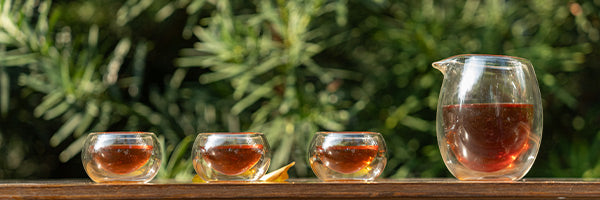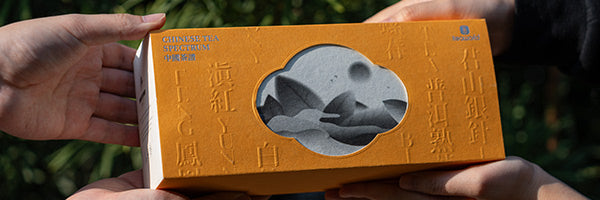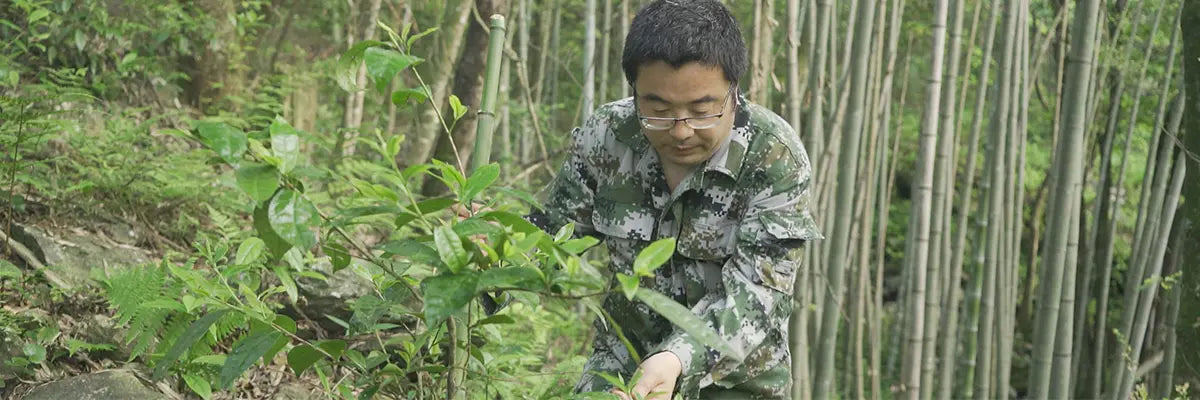Пробник чая — это простое начало для новичков. Вы можете легко открыть для себя вкус китайского чая, который вам нравится, а затем попробовать отдельные чаи из соответствующих видов.
Для новичков в китайском чае мы рекомендуем начать с нашего Wild Tea Sampler ($5 с бесплатной доставкой). Чаи в этом сэмплере охватывают 5 основных видов китайского чая.
Факты, которые вам нужно знать о китайском чае
Происхождение чая:
Чай возник в Китае . Самые ранние записи о чае появляются в первом китайском фармакологическом трактате «Шэньнун Бэнь Цао Цзин», в котором говорится: «Шэньнун попробовал сотни трав, столкнулся с семьюдесятью двумя ядами и нашел чай, который противодействовал им».
Историю потребления чая среди китайцев можно проследить со времен династии Цинь, как отмечает Гу Яньу в своей книге «Жи Чжи Лу»: «Только после того, как народ Цинь взял Шу, возник обычай пить чай».
Чадао и Чайи:

Чадао (Путь чая) — это всеобъемлющее культурное явление, охватывающее не только искусство заваривания и употребления чая, но и этикет образа жизни, опосредованный чаем. В китайской культуре Чадао глубоко почитается как способ развития характера и развития внутреннего «я».
Содержание Chayi (Чайное искусство) включает в себя такие аспекты, как выбор чайных листьев, выбор воды, методы заваривания чая, искусство чайной утвари и создание подходящей среды. Chayi не только включает в себя оценку методов дегустации чая и художественных методов работы, но также охватывает оценку приятной среды для чаепития.
Чадао и Чайи появились во времена династий Цзинь и Суй, до династии Тан, и продолжали развиваться и распространяться в последующих поколениях.
Шесть основных видов китайского чая:

Китай может похвастаться разнообразным ассортиментом листового чая , который можно разделить на шесть основных типов в зависимости от степени окисления и методов производства. Это листовой зеленый чай, листовой желтый чай, листовой белый чай, листовой черный чай, листовой улун и листовой темный чай. Каждый тип чая обладает своим уникальным очарованием и ценностью. Для начала рекомендуется изучить множество китайских чаев с помощью пробника чая .
За исключением листового зеленого чая, другие основные виды подвергаются определенной степени окисления в процессе производства.
Уровни окисления шести основных сортов чая, от низкого к высокому, следующие: листовой зеленый чай, листовой белый чай, листовой желтый чай, листовой улун, листовой черный чай и листовой темный чай. Соответственно, по мере повышения уровня окисления чайный настой каждого типа также претерпевает сдвиг от светлого к темному.
Классический чайный сэмплер: великолепное начало

Если вы хотите отправиться в путешествие в мир китайского чая, лучше всего начать с нескольких легкодоступных категорий чая и некоторых из самых классических сортов. Classic Tea Sampler от iTeaworld — это отличная отправная точка, предоставляющая удобный и доступный способ ощутить вкусы лучшего листового чая .
Часть черного чая:
Богатый и крепкий вкус черного чая знаком большинству людей. Начать с китайского черного чая — это беспроигрышный вариант. Если вам нравится английский завтрак или индийский черный чай, то вы можете попробовать Yunnan Black Tea и Yingde Black Tea , два сорта китайского черного чая, которые наверняка оставят неизгладимое впечатление.
Если вы склонны исследовать более уникальные черные чаи, стоит попробовать черный чай Сушонг и черный чай Дикий Сушонг из классического чайного семплера iTeaworld. Черный чай Дикий Сушонг выделяется своими дымными характеристиками, давая возможность заглянуть в очарование самых ранних черных чаев в мире. Черный чай Сушонг сохраняет основные характеристики самого раннего черного чая в мире, но не подвергается процессу копчения, что приводит к более сладкому вкусу с отчетливым цветочным ароматом.
Состав чая Улун:
Когда дело доходит до китайского чая улун, названия ТеГуаньинь и Да Хун Пао, несомненно, вам знакомы. В качестве отправной точки для изучения чая улун, эти два известных китайских чая улун обязательно стоит попробовать. Хотя ТеГуаньинь и Да Хун Пао оба известны и производятся в провинции Фуцзянь, Китай, их стили совершенно разные. Понимание ТеГуаньинь и Да Хун Пао заложит основу ваших знаний о китайском чае улун.
Чай улун известен своим насыщенным ароматом, и два чая, Fenghuang Dancong и Minnan Shuixian, являются хорошими примерами этого. Fenghuang Dancong славится своим ароматом, а Honey Orchid Fenghuang Dancong хорошо сбалансирован во всех аспектах аромата, что делает его подходящим для новичков. Кроме того, Minnan Shuixian — это очень ароматный чай улун, особенно любимый женщинами.
Есть много интересных аспектов для изучения о китайском черном чае и чае улун. Ниже мы поделимся некоторыми идеями в этом отношении, добавив больше удовольствия к вашему путешествию по дегустации чая.
Самый ранний черный чай был создан в Китае.
Происхождение черного чая:
Принято считать, что черный чай появился в конце правления династий Мин и начале правления Цин, что составляет его историю, насчитывающую несколько сотен лет.
Существует легенда о рождении черного чая:
В неспокойные времена поздней династии Мин и ранней династии Цин военные силы Цзянси прошли через деревню Тонму и заняли чайную фабрику. Солдаты спали на свежесобранных чайных листьях. После ухода армии фермеры обнаружили, что цвет чайных листьев стал красным. Чтобы возместить свои потери, фермеры разминали чайные листья, высушивали их с помощью местной сосновой древесины, в частности, Pinus massoniana. Высушенные чайные листья становились глянцево-черными, источая при заваривании насыщенный сосновый аромат.
Характеристики черного чая:
Листовой черный чай относится к полностью окисленному чаю. Качественные характеристики листового черного чая можно обобщить как «красный настой, красные листья, с сильным ароматом и сладким вкусом».
Листья рассыпного черного чая глянцево-черные, а настой имеет оранжево-желтый или оранжево-красный цвет. Основа листа имеет красновато-коричневый оттенок, как правило, имеет цветочные и фруктовые ароматы с богатым и сладким вкусом, оставляя приятное послевкусие.
Сладость в черном чае:
Черный чай подчеркивает сладость, но дело не только в сладости. Если кто-то говорит, что чем слаще черный чай, тем лучше, то это утверждение слишком однобоко.
Высококачественный черный чай должен быть чистым, сладким и освежающим, избегая чрезмерной сладости. Его сладость в первую очередь обусловлена наличием теанина и сахарных соединений в чайных листьях. На вкус он напоминает употребление цветочного нектара, приготовленного из свежих лепестков, или обильного сока только что собранных фруктов, даря глоток свежести и сладости.
Конечно, если черный чай окажется чрезмерно сладким до приторности, это, несомненно, ненормальная ситуация. Те, кто действительно разбирается в черном чае, не оценивают его качество исключительно по сладости.
Чай улун: славится своим ароматом
Главной особенностью чая улун является его насыщенный аромат:
Высокая ароматность чая улун является результатом различных факторов. С одной стороны, чай улун часто изготавливается из свежих листьев чайных деревьев, которые обладают высокими ароматическими качествами.
С другой стороны, уникальный процесс чая улун, известный как процесс «создания зеленого», не только создает зеленые листья с красными краями, но и способствует плавному дренажу воды внутри чайных листьев и формированию аромата чая. Таким образом, чай улун демонстрирует отличительную особенность сильного аромата, с незабываемым ароматом, наполняющим комнату при заваривании кипящей водой.
Чай улун полуокисленный:
Термин «полуокисленный» в чае улун относится к частичному окислению полифенолов чая в свежих листьях в процессе производства чая улун. Конкретная степень окисления определяется основным процессом производства, «приготовлением зеленого» чая улун.
Степень окисления значительно различается среди улунских чаев из разных регионов и сортов. Например, ТеГуаньинь имеет уровень окисления около 30%, что почти напоминает зеленый чай, в то время как Дунфан Мэйрен может достигать 70%, склоняясь к черному чаю. Степень окисления в улуне нельзя определить только по цвету настоя, так как процесс обжарки в улуне оказывает значительное влияние на цвет.
Чай улун — самый сложный из шести категорий чая:
Чай улун подчеркивает аромат, вкус и послевкусие, демонстрируя особенности методов приготовления чая, разнообразие сырья и окружающую среду чайных садов. Понимание любого измерения требует глубокого исследования и изучения в производственных зонах и на чайных фабриках.
Формирование аромата и вкуса чая улун представляет собой сложный процесс, в ходе которого природные вещества претерпевают сложные преобразования под воздействием человека.
Китайская чайная культура глубока, и в последние годы все больше людей стремятся ее исследовать.
Мы надеемся, что Classic Tea Sampler от iTeaworld послужит прекрасной отправной точкой для вашего путешествия по изучению китайского чая и поможет вам легко открыть для себя красоту других китайских чаев.













































































